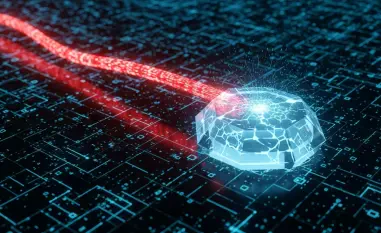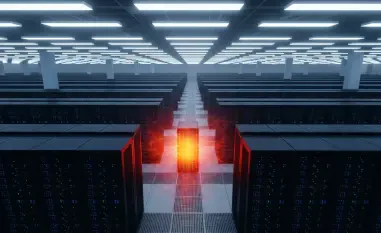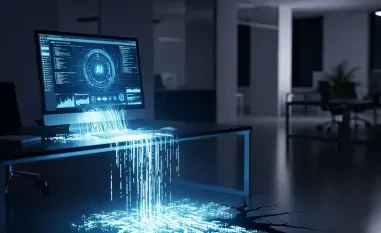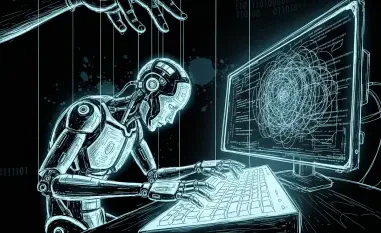In an era where technology is evolving at an unprecedented pace, cybersecurity experts like Malik Haidar play a crucial role in safeguarding organizations from sophisticated threats. With his extensive experience in combatting hackers and integrating business strategies into cybersecurity, Malik offers unique insights into the ever-evolving landscape of cyber threats. Today, we delve into the intriguing realm of deepfakes and their use in job interviews, particularly by North Korean IT operatives, to understand the rising challenges and potential solutions.
What is the main purpose of North Korean operatives using deepfakes in job interviews?
The primary purpose behind the use of deepfakes by North Korean operatives is to secure remote IT positions by masquerading their true identities. This allows them to infiltrate and potentially compromise organizations worldwide, often with malicious intentions such as cyber espionage. It’s part of a broader employment scam designed to bypass traditional security checks and enter companies under false pretenses.
How has the use of deepfakes by North Korean IT workers evolved over time?
Initially, these operatives relied on more rudimentary techniques for identity manipulation. However, with the advent of deepfake technology, they’ve significantly advanced their infiltration tactics. This “logical evolution,” as noted in the report, demonstrates how these threat actors continuously refine their methods to stay ahead in the cybersecurity arms race.
What advantages do deepfakes provide to North Korean threat actors in securing remote IT jobs?
Deepfakes offer two distinct advantages for these operatives. Firstly, they enable a single operator to apply for and potentially secure multiple roles using different synthetic identities. Secondly, they provide a layer of anonymity, helping them avoid being identified and listed in security bulletins or wanted notices. This increases their chances of successfully infiltrating organizations for malicious activities.
Can you describe the process of creating a deepfake identity based on the Unit 42 research findings?
According to Unit 42’s research, creating a deepfake identity is surprisingly straightforward. A researcher was able to generate deepfake identities in just over an hour using freely available tools and a standard computer. The process involved using single images from websites like thispersonnotexist.org and making simple wardrobe changes to simulate different candidates.
What tools and equipment did the Unit 42 researcher use to create a deepfake identity?
The researcher used an AI search engine, a five-year-old computer, and basic internet connectivity. These accessible tools highlight how minimally one can invest to create a convincing synthetic identity, showcasing the ease with which threat actors can employ such technology.
What are some specific indicators or technical shortcomings that can help detect a deepfake candidate during an interview?
Real-time deepfake systems often have several technical limitations, such as issues with temporal consistency, handling occlusion, adapting to lighting, and synchronizing audio-visual elements. These can create noticeable glitches or inconsistencies during an interview, serving as potential red flags for identifying deepfake candidates.
How can organizations record and analyze interviews to identify potential deepfake candidates?
Organizations should record interviews for later forensic analysis. This allows HR and security teams to review conversations for signs of deepfakes. Using advanced analytics tools to scrutinize these recordings can help detect technical anomalies associated with deepfake technology, providing an additional layer of security in the hiring process.
What comprehensive identity verification steps should organizations implement during the hiring process?
A robust identity verification workflow is essential. This should include verifying document authenticity, confirming the candidate’s identity, and matching their provided documents with their live appearance. Prioritizing these steps early in the hiring process can prevent the progression of candidates with synthetic identities.
How can tracking job application IP addresses help organizations spot deepfake candidates?
Tracking IP addresses of job applicants can reveal information about their origin. Suspicious patterns, such as connections from anonymizing services or countries known for cyber threats, can indicate potential deepfake candidates. Flagging these connections for closer scrutiny can help organizations identify and mitigate risks.
Why should organizations be cautious about candidates using VoIP carriers for phone numbers?
VoIP numbers can be easily acquired and used to conceal an individual’s true location and identity. Since these are often linked with identity concealment, organizations should verify phone numbers’ authenticity and check them against databases that track suspicious or anonymized numbers.
How can companies collaborate with Information Sharing and Analysis Centers (ISACs) to combat synthetic identity techniques?
Collaboration with ISACs allows organizations to share knowledge and gain access to the latest intelligence on synthetic identity threats. Participating in these networks can help companies stay informed about emerging techniques, share effective countermeasures, and strengthen their collective defenses against such fraudulent practices.
Can you give an example of a security firm that mistakenly hired a threat actor posing with a deepfake identity?
One well-documented case involved the security firm KnowBe4, which inadvertently hired a threat actor using a deepfake identity. The deception was only uncovered after the individual introduced malware into the company’s systems, underscoring the effectiveness and danger of deepfake methods.
What advice do you have for organizations looking to protect themselves against such cybersecurity threats?
Organizations must stay vigilant and proactive. Implement comprehensive identity verification processes, leverage technology to detect deepfakes, and foster collaboration across the cybersecurity community. Continuous education and awareness are critical in adapting to the evolving tactics of cyber adversaries.













